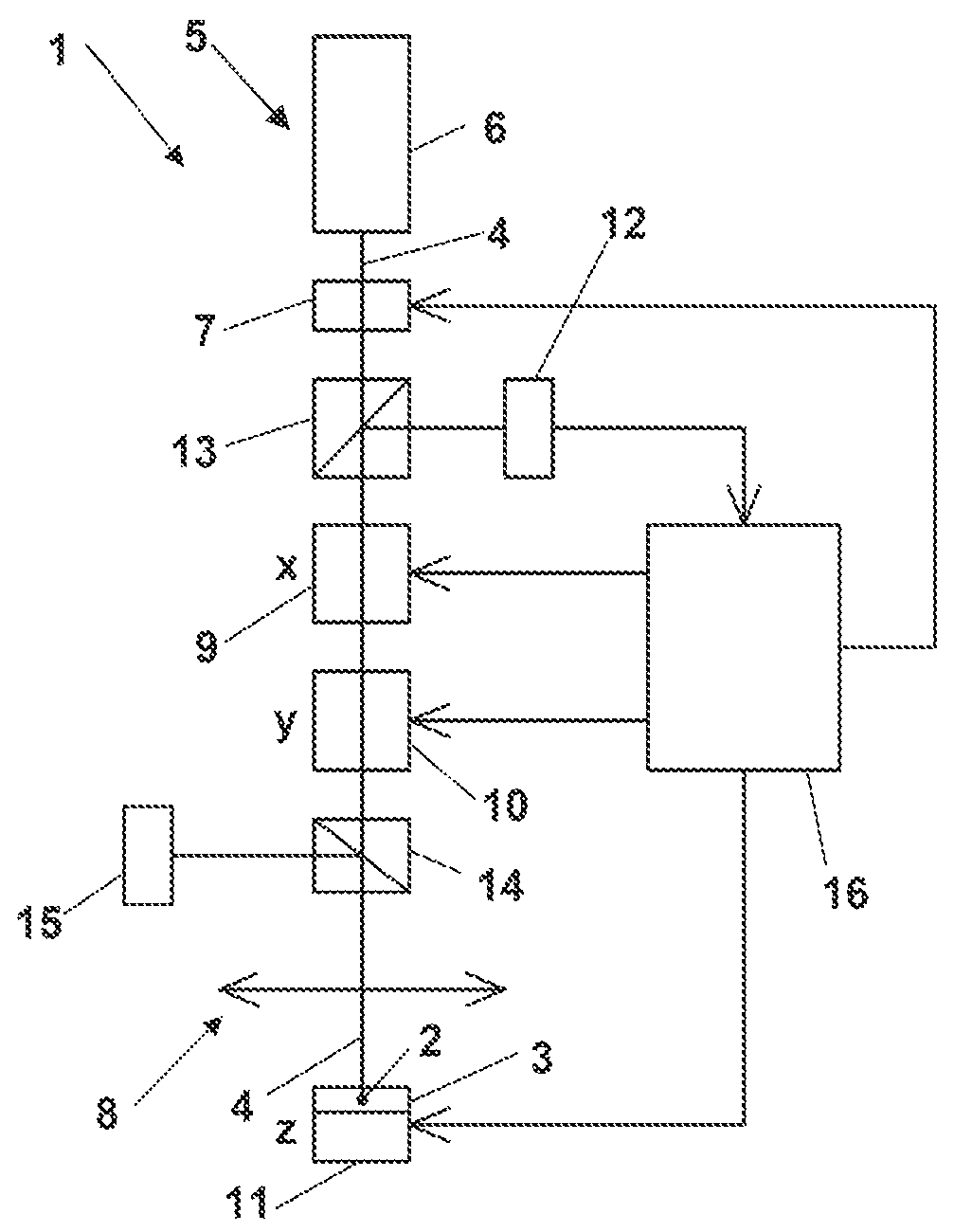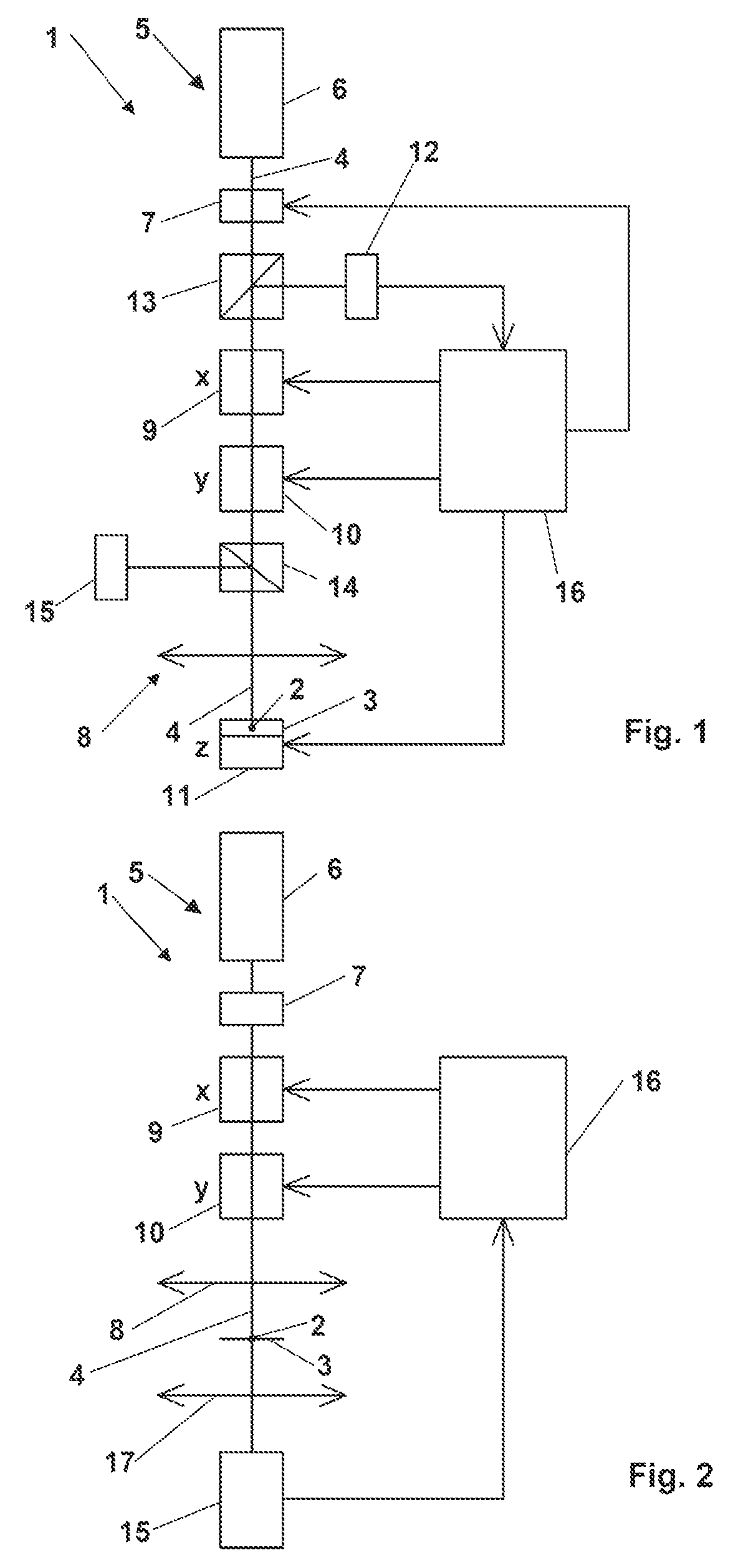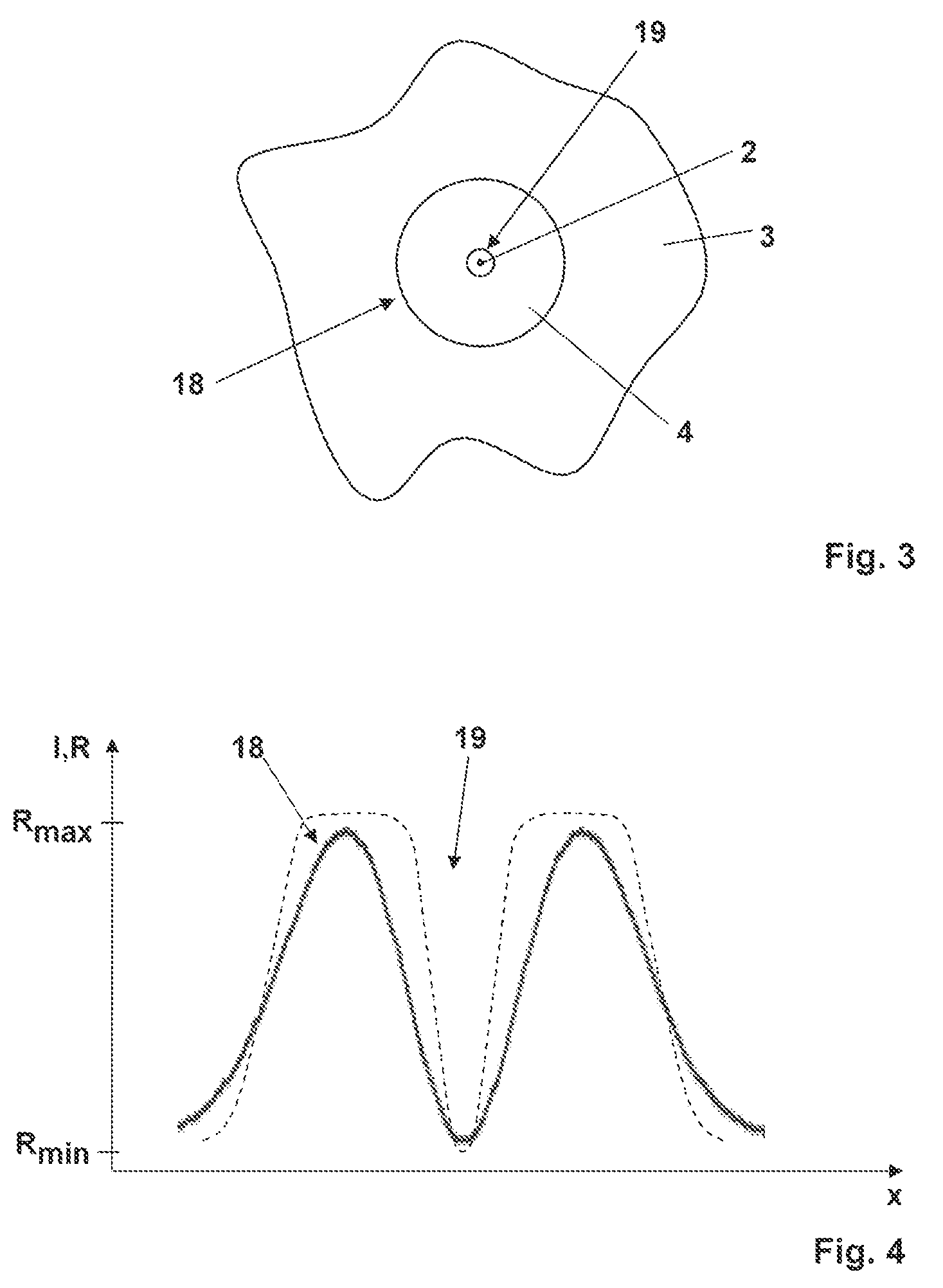Method and apparatus for tracking a particle, particularly a single molecule, in a sample
a technology of particle movement and sample, applied in the direction of fluorescence/phosphorescence, instruments, material analysis, etc., can solve the problems of increasing the inability to track the movement or the movement of a molecule marked with the fluorophore for an extended period of time or a longer distance, and the risk of bleaching of molecule is relatively high
- Summary
- Abstract
- Description
- Claims
- Application Information
AI Technical Summary
Problems solved by technology
Method used
Image
Examples
Embodiment Construction
[0027]The particle whose movement in the sample is tracked according to the present disclosure may be a single molecule, a group of molecules moving together, a complex, a quantum dot, a reflecting gold particle or the like.
[0028]The process underlying the emission of photons by the particle being subjected to the light may be fluorescence. However, many other processes may also be used as a basis for the emission of photons, e.g. scattering of the light.
[0029]The respective process causing the emission of photons may be related to the properties of the particle to be tracked itself or to a marker, particularly a dye, marking the particle to be tracked.
[0030]In the method according to the present disclosure, the light intensity distribution applied to the sample features a spatially limited minimum. Like in case of the fluorescence inhibiting light used in STED or RESOLFT fluorescence microscopy, this intensity distribution may be formed by an interference pattern of one or more coh...
PUM
| Property | Measurement | Unit |
|---|---|---|
| light intensity distribution | aaaaa | aaaaa |
| time | aaaaa | aaaaa |
| detection time | aaaaa | aaaaa |
Abstract
Description
Claims
Application Information
 Login to View More
Login to View More - R&D
- Intellectual Property
- Life Sciences
- Materials
- Tech Scout
- Unparalleled Data Quality
- Higher Quality Content
- 60% Fewer Hallucinations
Browse by: Latest US Patents, China's latest patents, Technical Efficacy Thesaurus, Application Domain, Technology Topic, Popular Technical Reports.
© 2025 PatSnap. All rights reserved.Legal|Privacy policy|Modern Slavery Act Transparency Statement|Sitemap|About US| Contact US: help@patsnap.com



